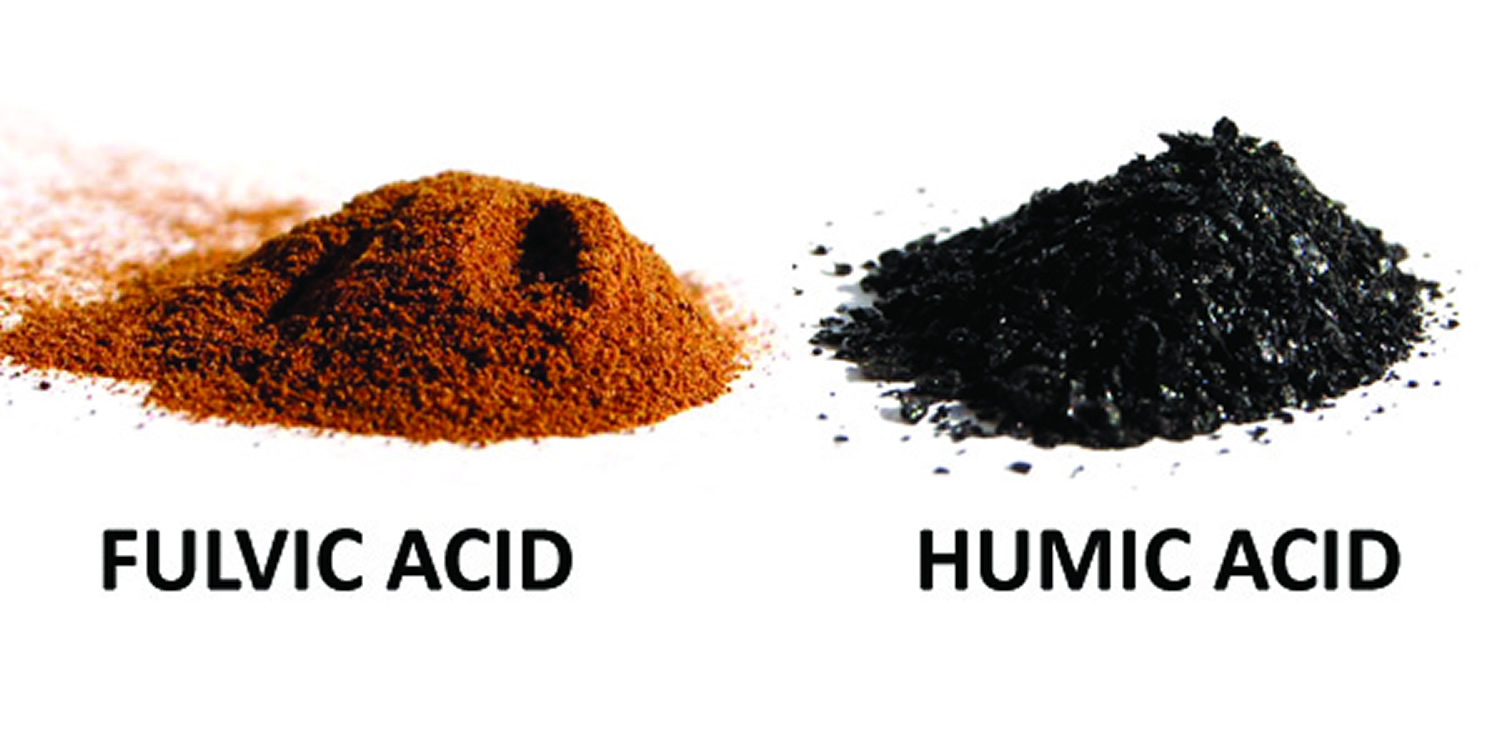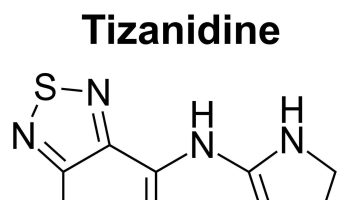What is fulvic acid
Humus or humified organic matter is the remaining part of organic matter that has been used and transformed by many different soil organisms. Fulvic acid is a class of compounds of humic substances, is a mixture of polyphenolic acid compounds formed through the degradation of organic substances such as dead plants, microbes and animals by chemical and biological processes 1.
Humus consists of different humic substances:
- Fulvic acids: the fraction of humus that is soluble in water under all pH conditions. Their colour is commonly light yellow to yellow-brown.
- Humic acids: the fraction of humus that is soluble in water, except for conditions more acid than pH 2. Common colours are dark brown to black.
- Humin: the fraction of humus that is not soluble in water at any pH and that cannot be extracted with a strong base, such as sodium hydroxide (NaOH). Commonly black in colour.
The term acid is used to describe humic materials because humus behaves like weak acids.
Fulvic acids are produced in the earlier stages of humus formation. The relative amounts of humic and fulvic acids in soils vary with soil type and management practices. The humus of forest soils is characterized by a high content of fulvic acids, while the humus of agricultural and grassland areas contains more humic acids.
Fulvic acids are similar to humic acids, with differences being the carbon and oxygen contents, acidity, degree of polymerization, lower molecular weight, and color 2. Fulvic acids – the fraction of humic substances that is soluble in water under all pH conditions. They remains in solution after removal of humic acid by acidification. Fulvic acids are light yellow to yellow-brown in color.
Figure 1. Fulvic acid

- Please note that fulvic acid used in natural medicines are often tried for many conditions based on tradition, anecdotes, or marketing, but not all of these uses are supported by reliable or credible scientific research.
Fulvic acid has been utilized in traditional Chinese medicine to treat a variety of diseases, including externally to treat hematoma, phlebitis, desmorrhexis, myogelosis, arthrosis, polyarthritis, osteoarthritis, and osteochondrosis. Likewise, fulvic acid has been taken orally as a therapy for gastritis, diarrhea, stomach ulcers, dysentery, colitis, and diabetes mellitus 3, 4. Orally, fulvic acid is used for cognitive disorders such as Alzheimer’s disease, respiratory tract infections, cancer, fatigue, heavy metal toxicity, eczema, and preventing hypoxia 5. Topically, fulvic acid is used for pollen allergies 5.
Fulvic acid/humic substances isolated from soil and water reservoirs have been reported to stimulate neutrophil and lymphocyte immune function 6.
Recently, the physiological action of fulvic acid on the human body has been studied. For example, the possible application of coal-derived fulvic acid as antimicrobials 7 and the anti-inflammatory property of coal-derived fulvic acid have been reported 8. In addition, the fulvic acid extracted from peat 9 had an antioxidative activity and the fulvic acid extracted from Canadian Sphagnum Peat 10 had an inhibitory effect on chemical mediator release in rat basophilic leukemia cells (RBL-2H3).
Fulvic acid has previously been demonstrated to be microbiocidal against Candida albicans biofilms 11. Fulvic acid also has several nutraceutical properties with potential activity to protect cognitive impairment. In this test tube study 12, the researchers provide evidence to show that the aggregation process of tau protein, forming paired helical filaments in vitro, is inhibited by fulvic acid affecting the length of fibrils and their morphology. In addition, the authors showed that fulvic acid is an active compound against preformed fibrils affecting the whole structure by diminishing length of paired helical filaments and probably acting at the hydrophobic level. Thus, fulvic acid is likely to provide new insights in the development of potential treatments for Alzheimer’s disease using natural products.
Figure 2. Fulvic acid and humic acid

Humic and Fulvic acid
Humic acids are macromolecules that comprise humic substances, which are organic matter distributed in terrestrial soil, natural water, and sediment 13. Humic acids – the fraction of humic substances that is not soluble in water under acidic conditions (pH < 2) but is soluble in alkaline media. They can be extracted from soil by various reagents and which is insoluble in dilute acid. Humic acids are the major extractable component of soil humic substances. They are dark brown to black in color.
Due to their amphiphilic character, humic acids form micelle-like structures in neutral to acidic conditions, which are useful in agriculture, pollution remediation, medicine and pharmaceuticals. Humic acids have undefined compositions that vary according to the origin, process of obtainment, and functional groups present in their structures, such as quinones, phenols, and carboxylic acids. Quinones are responsible for the formation of reactive oxygen species (ROS) in humic acids, which are useful for wound healing and have fungicidal/bactericidal properties. Phenols and carboxylic acids deprotonate in neutral and alkaline media and are responsible for various other functions, such as the antioxidant and anti-inflammatory properties of humic acids. In particular, the presence of phenolic groups in humic acids provides antioxidant properties due to their free radical scavenging capacity. This paper describes the main multifunctionalities of humic acids associated with their structures and properties, focusing on human health applications, and we note perspectives that may lead to novel technological developments. To the best of our knowledge, this is the first review to address this topic from this approach.
Fulvic acid benefits
Oxifulvic acid has been shown in vitro to have antimicrobial activity 14 and to suppress superoxide production by neutrophils. Topical application of oxifulvic acid to laboratory mice has demonstrated clear anti-inflammatory properties 2. Heavy metal-free, carbohydrate-derived fulvic acid has been tested in pilot studies, and found to have similar properties when compared with oxifulvic acid 15. In this trial 16 involving 36 patients with dermatitis (eczema), carbohydrate-derived fulvic acid significantly improved some features of eczema, in particular, overall severity and erythema. Investigator assessment of global response to treatment with carbohydrate-derived fulvic acid was significantly better than that with emollient therapy only. Carbohydrate-derived fulvic acid was well tolerated, with no difference in reported side effects, other than a short-lived burning sensation on application 16.
However there is Insufficient Evidence for Fulvic acid in :
- Alzheimer’s disease.
- Respiratory tract infections.
- Cancer.
- Fatigue.
- Heavy metal toxicity.
- Preventing a condition in which the body tissues do not receive enough oxygen (hypoxia).
- Other conditions.
More evidence is needed to rate fulvic acid for these uses.
Fulvic acid side effects
Kashin-Beck disease is an acquired, chronic and degenerative osteoarticular disorder. Selenium deficiency and fulvic acid in drinking water have been implicated in the cause of this disease 17. Pathologically, chondronecrosis of the growth plate and articular cartilage and subconsequent disturbance of ossification were observed in the joints. In this animal model study, mice were fed with a selenium deficient diet and fulvic acid supplemented drinking water for two generations. Histological preparations of bone revealed that selenium deficiency and fulvic acid supplementation induced degeneration of the articular cartilage in the knee joints of mice, resembling the early stages of osteoarthrosis. This became obvious by disturbed development of the articular space and meniscus, markedly impaired formation of subchondral bone and early differentiation failure during enchondral ossification 17.
Autoimmune diseases: Fulvic acid might increase the activity of the immune system. In theory, fulvic acid might worsen some autoimmune diseases, such as multiple sclerosis, systemic lupus erythematosus (SLE), and rheumatoid arthritis (RA). People with these conditions should be cautious or avoid fulvic acid altogether.
Pregnancy and breast-feeding: There is not enough reliable information about the safety of taking fulvic acid if you are pregnant or breast feeding. Stay on the safe side and avoid use.
- Microarray analysis of immediate-type allergy in KU812 cells in response to fulvic acid. Motojima H, O Villareal M, Han J, Isoda H. Cytotechnology. 2011 Mar; 63(2):181-90. https://www.ncbi.nlm.nih.gov/pmc/articles/PMC3080475/[↩]
- Van Rensburg CEJ, Malfeld SCK, Dekker J. Topical application of oxifulvic acid suppresses the cutaneous immune response in mice. Drug Dev Res. 2001;53:29–32.[↩][↩]
- Schepetkin I, Khlebnikov A, Kwon BS. Medical Drugs From Humus Matter: Focus on Mumie. Drug Dev Res. 2002;57:140–159.[↩]
- Shilajit: a review. Agarwal SP, Khanna R, Karmarkar R, Anwer MK, Khar RK. Phytother Res. 2007 May; 21(5):401-5. https://www.ncbi.nlm.nih.gov/pubmed/17295385/[↩]
- FULVIC ACID. http://naturaldatabase.therapeuticresearch.com/nd/Search.aspx?cs=&s=ND&pt=100&id=1320&fs=ND&searchid=62484142[↩][↩]
- Characterization and biological activities of humic substances from mumie. Schepetkin IA, Khlebnikov AI, Ah SY, Woo SB, Jeong CS, Klubachuk ON, Kwon BS. J Agric Food Chem. 2003 Aug 27; 51(18):5245-54. https://www.ncbi.nlm.nih.gov/pubmed/12926866/[↩]
- An in vitro investigation of the antimicrobial activity of oxifulvic acid. van Rensburg CE, van Straten A, Dekker J. J Antimicrob Chemother. 2000 Nov; 46(5):853. https://www.ncbi.nlm.nih.gov/pubmed/11062218/[↩]
- Rensburg CEJ, Malfeld SCK, Dekker J. Topical application of oxifulvic acid suppresses the cutaneous immune response in mice. Drug Develop Res. 2001;53:29–32. doi: 10.1002/ddr.1166.[↩]
- Tachibana Y, Hiribe S, Tawa R. Studies of antioxidative activity of humic substances in peat (1) Trace Nutrients Res. 2004;23:104–108.[↩]
- Inhibitory effect of fulvic acid extracted from Canadian sphagnum peat on chemical mediator release by RBL-2H3 and KU812 cells. Yamada P, Isoda H, Han JK, Talorete TP, Abe Y. Biosci Biotechnol Biochem. 2007 May; 71(5):1294-305. https://www.jstage.jst.go.jp/article/bbb/71/5/71_60702/_article[↩]
- Sherry L, Millhouse E, Lappin DF, et al. Investigating the biological properties of carbohydrate derived fulvic acid (CHD-FA) as a potential novel therapy for the management of oral biofilm infections. BMC Oral Health. 2013;13:47. doi:10.1186/1472-6831-13-47. https://www.ncbi.nlm.nih.gov/pmc/articles/PMC3849008/[↩]
- Fulvic Acid Inhibits Aggregation and Promotes Disassembly of Tau Fibrils Associated with Alzheimer’s Disease. Journal of Alzheimer’s Disease, vol. 27, no. 1, pp. 143-153, 2011. DOI: 10.3233/JAD-2011-110623[↩]
- Humic acids: Structural properties and multiple functionalities for novel technological developments. Materials Science and Engineering: Volume 62, 1 May 2016, Pages 967-974. https://doi.org/10.1016/j.msec.2015.12.001[↩]
- An in vitro investigation of the antimicrobial activity of oxifulvic acid. van Rensburg CE, van Straten A, Dekker J. J Antimicrob Chemother. 2000 Nov; 46(5):853. https://www.ncbi.nlm.nih.gov/pubmed/11062218[↩]
- Vrey PJ, Jansen van Rensburg CEJ. Characterization of a novel fulvic acid product derived from a safe, metal-free, naturally-occurring carbohydrate source. Data on file at Department of Pharmacology, University of Pretoria; Pretoria, South Africa[↩]
- Gandy JJ, Snyman JR, van Rensburg CE. Randomized, parallel-group, double-blind, controlled study to evaluate the efficacy and safety of carbohydrate-derived fulvic acid in topical treatment of eczema. Clinical, Cosmetic and Investigational Dermatology. 2011;4:145-148. doi:10.2147/CCID.S23110. https://www.ncbi.nlm.nih.gov/pmc/articles/PMC3173016/[↩][↩]
- Selenium Deficiency and Fulvic Acid Supplementation Induces Fibrosis of Cartilage and Disturbs Subchondral Ossification in Knee Joints of Mice: An Animal Model Study of Kashin-Beck Disease. C Yang et al. Virchows Arch A Pathol Anat Histopathol 423 (6), 483-491. 1993. https://www.ncbi.nlm.nih.gov/labs/articles/8291220/[↩][↩]





